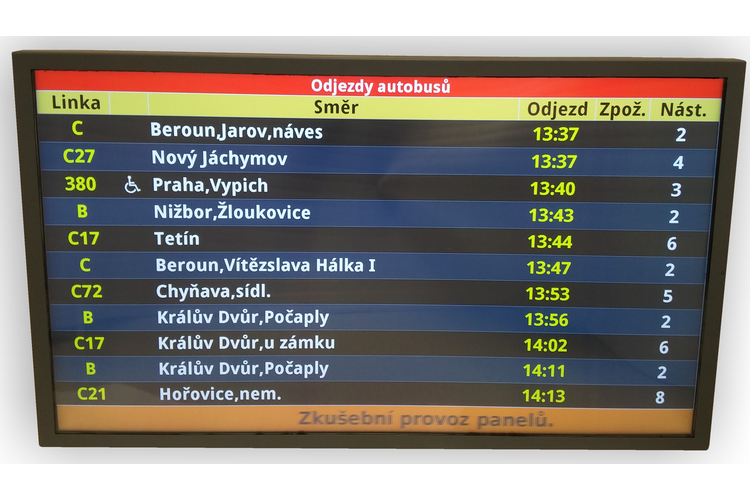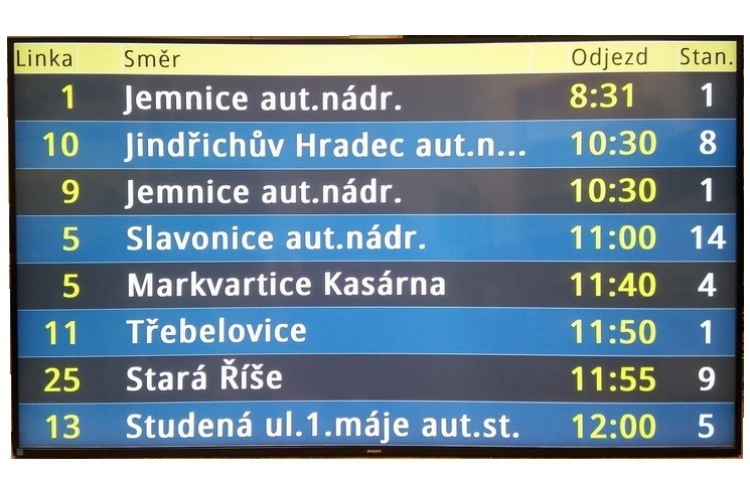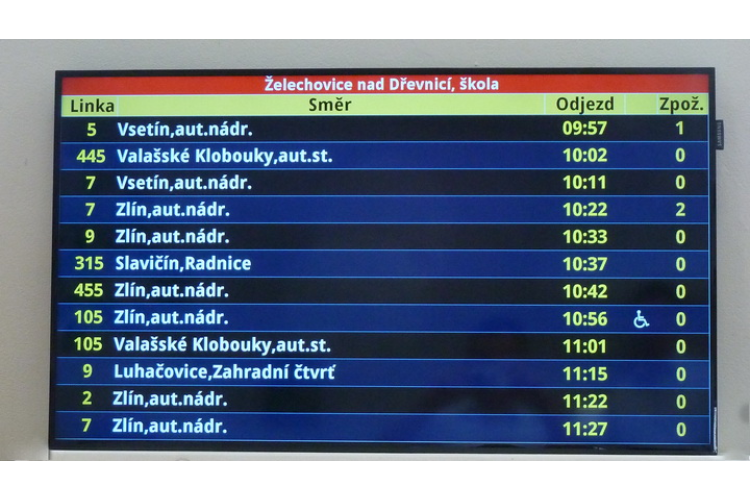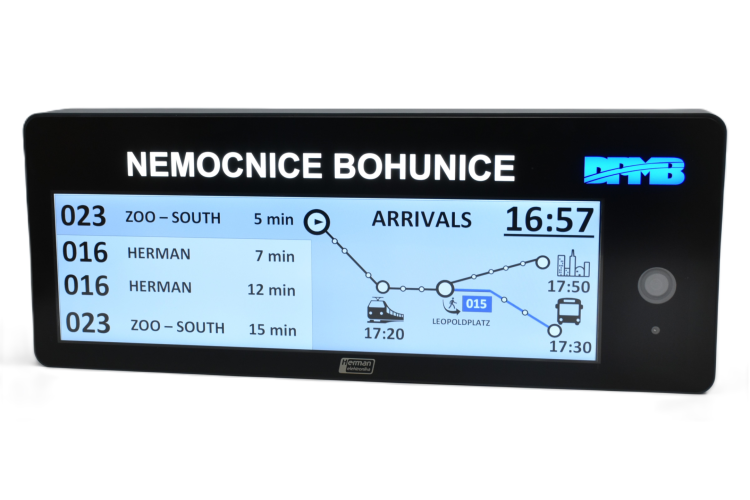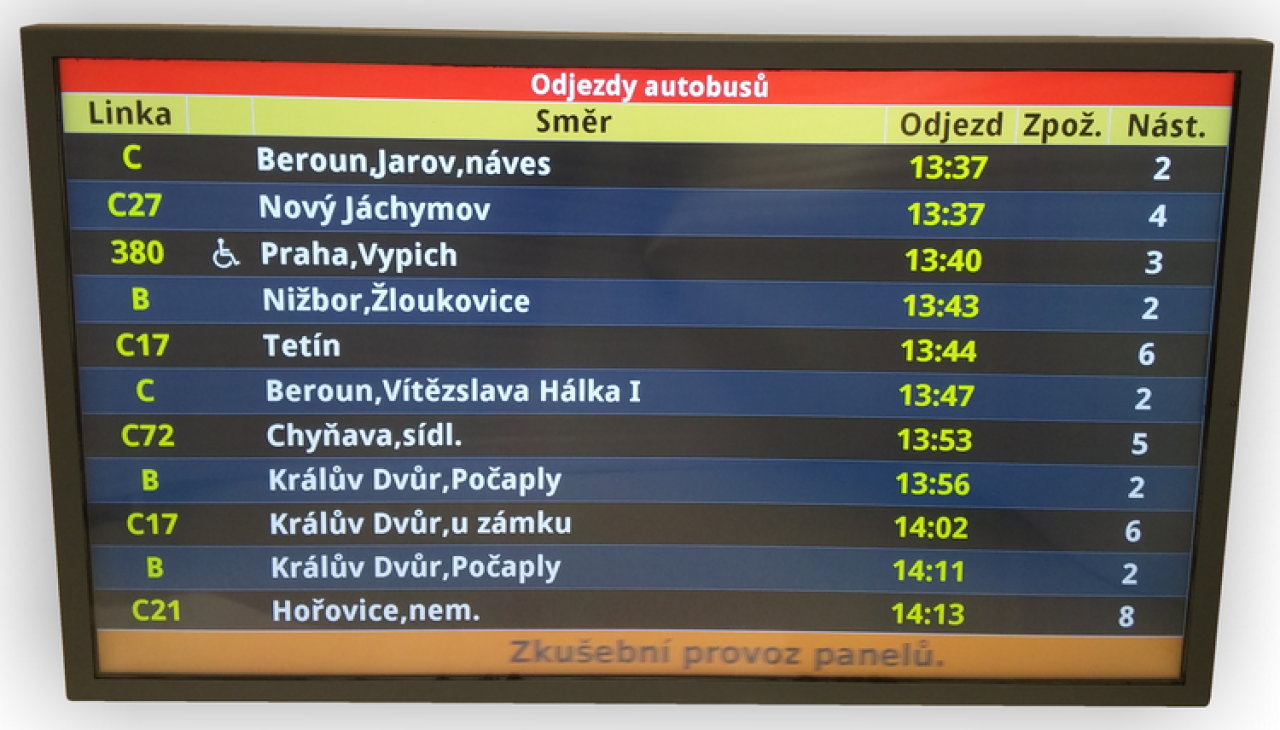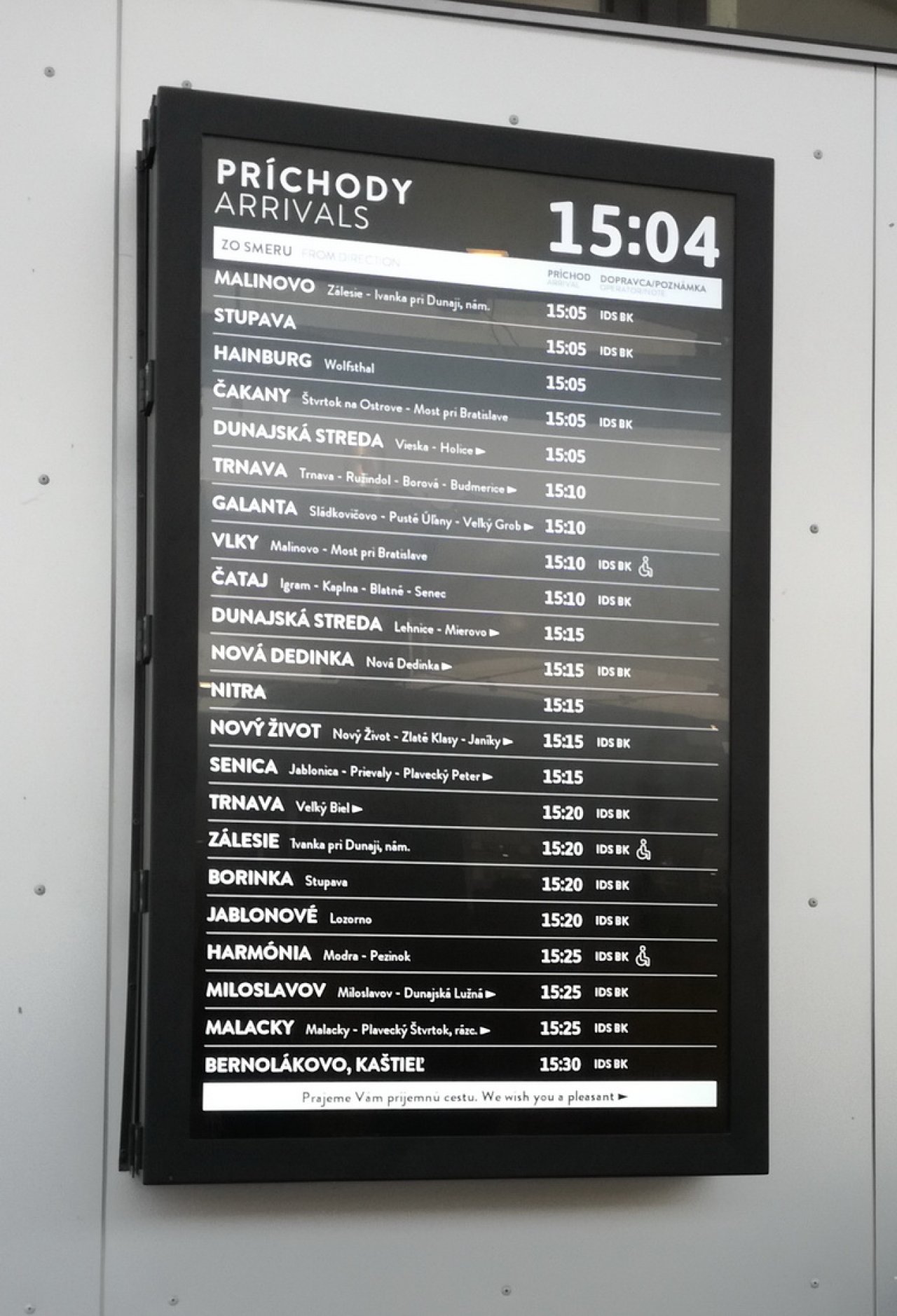Information LCD panels
General features of LCD bus stop information panels
Stop LCDs can be used inside waiting rooms and covered terminals or directly at bus stops or interchanges, preferably in shelters protected from direct sunlight for legibility. When using LCD panels for external environments, care must be taken that the external light is many times more intense than the internal light, or the maximum luminous intensity of the LCD. Below is a table that describes typical illuminances in different spaces.
From this table, it is clear that the intensity of lighting inside and outside in summer at midday can vary by more than 1000 times. Therefore, for outdoor areas, the commonly supplied LCD panels cannot be used, but they must have a significantly higher luminance (at least 1000 Cd/m2) and must contain filters against sunlight (otherwise the LCD will burn out - turn brown). Another disadvantage of TFT LCD displays is that they turn black in direct sunlight and thus are readable at short distances (contrast is significantly reduced). This, of course, results in a different price for the displays (again, multiples of the price of LCDs). A comparison of the use of external LCDs versus LED panels is here.
LCD panels must be used in transmissive or reflective mode, where they have the ability to absorb light rays. However, the fact remains that LED panels can have up to 50 times the luminance of LCDs. Also, the lifetime of LED panels is many times higher than that of LCD panels. Therefore, we recommend using LCD panels (if possible) mainly for indoor use or outdoor use where the panel is not exposed to direct light (e.g. in the shade of a shed). A special chapter is the newly used "electronic papers", i.e. LCDs of the cholesteric display or electrophoretic display type - more details here.
In general, the LCD panels supplied have different types of resolution and luminosity, ranging from 400 Cd/m2 in the waiting room to 1500 Cd/m2 in outdoor areas. It is advisable to require a lifetime of at least 50 thousand hours (our standard delivery). As far as the temperature range is concerned, this is usually from 0°C - 50°C for large LCD displays over 32″ and therefore must include thermal regulation (heating, cooling and ventilation).
In embodiments, the departure data on the LCD displays can be displayed "landscape" as standard, or they can be displayed "portrait" to increase the number of departures displayed. This is shown in the following illustration for the ELP 865 (i.e. a large 65″ panel). The LCD panels according to this design then have different mechanical designs and this must be specified in the order.
In terms of power consumption, it is important to note that LCD panels need to backlight the entire display area, regardless of the content being displayed. Consequently, the consumption of an LCD panel is permanent and always much higher than that of an LED panel.
We produce LCD bus stop information panels in external or internal versions as stationary (usually custom-made) or as a series for public transport vehicles (regular or regional). We try to make the mechanical construction using welded aluminium structures due to lower weight or stainless steel.
LCD panels are produced in the following possible designs:
- external LCD stop panels (single, double and with integrated clock system).
- indoor LCD stop panels
- external LCD panels with or without touch screen (i-point kiosks)
LCD stop control
We offer several possible solutions for the control of LCD panels:
- it is directly connected to the dispatching system (e.g. our SPRINTER) and receives relevant information from there at regular intervals.
- The panel is active and downloads the required information from the IDS or public transport server, e.g. solutions used in MPVs (ROPID, KODIS, KOVED, ...).
- The panel communicates with our MEDIA server and gets the necessary information from there. In this case, the server operator can also enter the alternation of traffic information or advertisements on the bus stop LCD.
Table of typical room lighting
The following table describes the intensity of light in different situations (taken from the Typical Lighting Table presented on the website www.stavebnictvi3000.cz/clanky/zarovka-usporna-zarovka-mnozstvi-svetla. It makes it abundantly clear that lighting in an office room has at least 300 times less luminous intensity than lighting in the harsh midday afternoon light.
| Light source | E (lx) | I (W/m2) |
|---|---|---|
| Full moon night illumination | 2·10-1 | 3.08-10-4 |
| Lighting for comfortable reading | 50 | 0.074 |
| Office lighting | 300 | 0,44 |
| Excellent room lighting | 700 | 01.II |
| Sunlight, one hour before sunset | 1 000 | 1,47 |
| Daylight, cloudy | 3 000 | 4,41 |
| Sunny day in the shade of a tree | 10 000 | 14,7 |
| Sharp sunlight at noon | 100 000 | 147 |
Table of some typical illuminances in lux and associated luminous flux I in W/m2. The illuminance in lux (2nd column) is obtained as the luminous flux intensity (3rd column) multiplied by the maximum luminous efficacy of the radiation Km = 680 lm/W.

